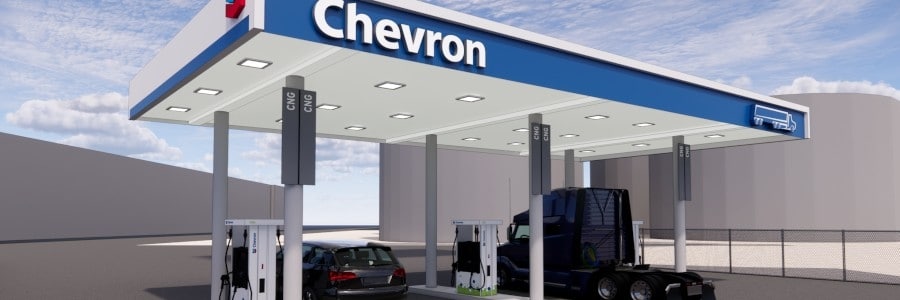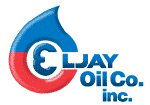The Lowdown on Lower-Carbon, Heavy-Duty Fuels

A worldwide energy transition to help reduce carbon emissions is underway. The renewable fuel and the heavy-duty transportation industries are both part of this effort. Heavy-duty original equipment manufacturers (OEMs) and energy producers have made significant progress on finding lower-carbon alternatives to conventional diesel fuels. In this column, we look at commercially available alternatives that are already making inroads in certain segments of the industry.
Renewable Diesel and Biodiesel
The terms renewable diesel and biodiesel (RD and BD) are often used interchangeably, although they are produced differently. Both RD and BD are derived from the same feedstocks (the raw materials used to create the fuel) – soybean oil, used cooking oil, tallow and other plant- and animal-based oils. The primary difference is in the way each is processed into a fuel, which affects their composition.
RD is processed in a refinery, similarly to conventional diesel. The renewable feedstocks can be commingled with fossil feedstocks in a traditional refining process that yields a hydrocarbon product with a percentage of renewably sourced material. In contrast, BD does not go through a refinery. It is produced through a process called transesterification, a chemical reaction through which triglycerides in the feedstocks are converted into combustible fatty acid methyl esters.
RD is commonly called a “drop-in” fuel, meaning it can be used in a diesel engine. A variety of RD and BD blends are commercially available today. Typically, biodiesel is limited to 20% volume of a blend, while renewable diesel can be used as-is with no more than .1% conventional diesel. A fleet can start using these fuels without investment in new engine technology.
The carbon intensity (CI) on a lifecycle basis of renewable-diesel or biodiesel fuel can vary considerably depending on the feedstock, the processing technology, and the application. Because RD and BD fuels are derived from renewable feedstocks, they have a lower lifecycle CI than conventional diesel.
The main challenge for widespread adoption of RD and BD is the availability of feedstocks, sourcing, processing, and distribution of RD and BD are not yet at a sufficient scale to supply retail and commercial fuel station demands. Chevron has begun selling these fuel blends throughout California and has plans for more terminals, more volume, and additional blends that have increasing amounts of renewable feedstocks. Chevron’s recent acquisition of Renewable Energy Group (REG) and its new Bunge Chevron Ag Renewables joint venture will help achieve its target of having 100,000 barrels per day of renewable fuels production capacity by 2030.
Renewable and Compressed Natural Gas
Compressed natural gas or CNG has been in use since the 1970s. Though adoption as a transportation fuel product has been slow in the U.S., it has undergone a renaissance in recent years due to the introduction of renewable sources. Natural gas has been widely used in household stoves and water heaters, but its application as a heavy-duty transportation product is growing. In contrast to RD & BD, CNG cannot be used in a traditional diesel engine. Vehicles equipped with natural gas engines do not require advanced aftertreatment systems that a diesel engine needs to meet tailpipe emission requirements. This also eliminates the need for diesel exhaust fluid or periodic Diesel Particulate Filter maintenance.
Because CNG and diesel fuel exist in different states (gas vs. liquid) consumption is compared on an energy equivalent basis. A CNG-fueled vehicle, like a gasoline-powered vehicle, will return lower fuel economy figures than a diesel vehicle on an energy equivalent basis. Pumping losses attributed to an intake throttle and reduced compression ratio are major contributors to this efficiency reduction. CNG is sold in units of Gasoline or Diesel Gallon Equivalent, GGE or DGE. When comparing CNG and diesel-fuel prices however, CNG is often more attractive on a cost per mile and total cost of ownership (TCO) basis. The carbon intensity on a lifecycle basis of conventional natural gas is slightly lower than that of diesel. However, when renewable sources are linked to the CNG, overall lifecycle CI can become far lower.
Renewable natural gas, aka biomethane, can be derived from several sources including livestock operations, landfill sites, wastewater treatment plants, and organic waste facilities which recover material from miscellaneous sources.
Accelerating the commercial-scale adoption of CNG transportation requires progress on both natural gas vehicle availability as well as access to fueling infrastructure. On the former, Cummins is expanding its portfolio of CNG engine offerings with a new 15L engine targeted for release in 2024. On the latter, suppliers like Chevron are working to develop a strategic network of CNG fueling sites. Contrary to conventional fueling stations, natural gas is supplied via pipeline to sites, compressed via onsite equipment, and then dispensed into a vehicle’s CNG tanks. The target use case is heavy-duty class 8 tractors, and the greatest adoption to date is among return-to-base operations, in which the vehicles return to the same facilities every night for refueling. Typical segments include package delivery services, waste haulers, and transit systems. The challenge to wider adoption is twofold: to drive demand and build up the infrastructure to support it at the same time.
As part of supplying CNG, Chevron is working with dairy farmers, waste management companies and other third parties to capture existing biogas from their operations and converting it to RNG. Capturing biogas from dairy farms and landfills to power a vehicle represents about 400% and 50% decreases to dairy farm and landfill operations, respectively, in lifecycle carbon intensity vs conventional diesel under California’s Low Carbon Fuel Standard. After being treated, the RNG is placed into the natural gas network and helps to displace conventional natural gas in that network. The purchase of CNG from Chevron or its retailers or marketers will help support these efforts as they grow over time.
While more work is needed to make renewable diesel, biodiesel, and compressed natural gas available at scale, the technology is available today to deliver high-performing heavy-duty transportation fuels with lower lifecycle CI and operational benefits, and which can contribute to a lower total cost of operations. For now, these fuels represent a way for companies in the transportation sector to start to meet ambitious goals of lowering their use of carbon on a lifecycle basis.
